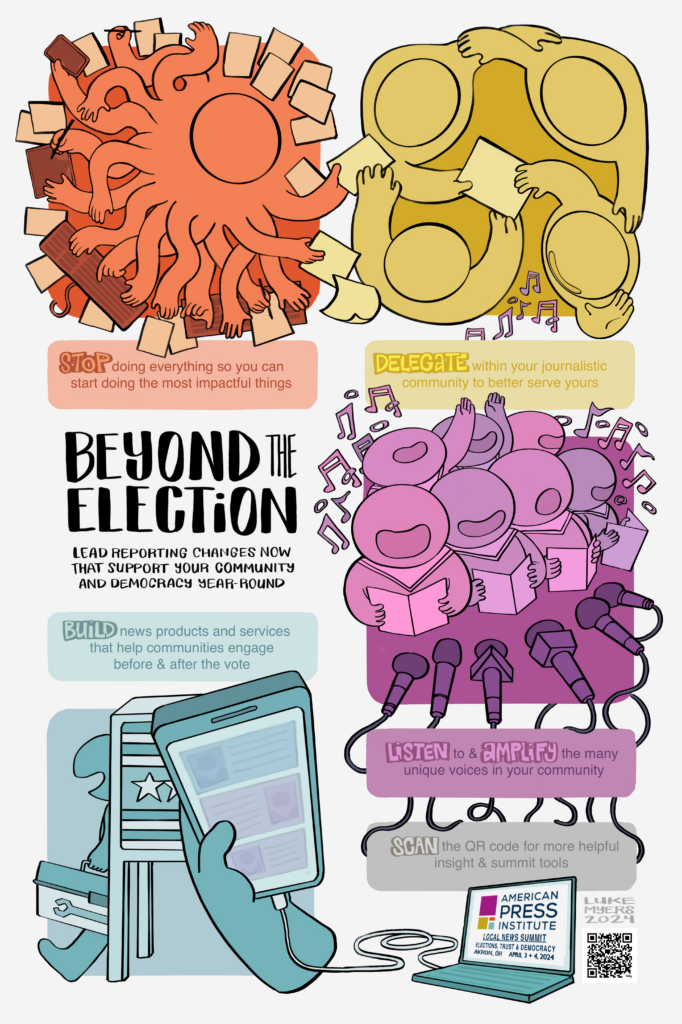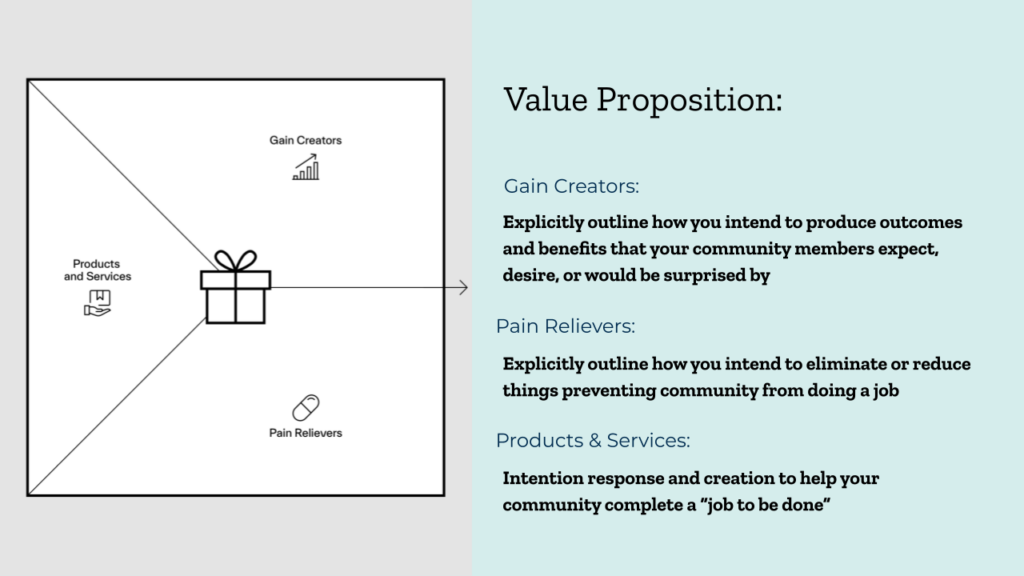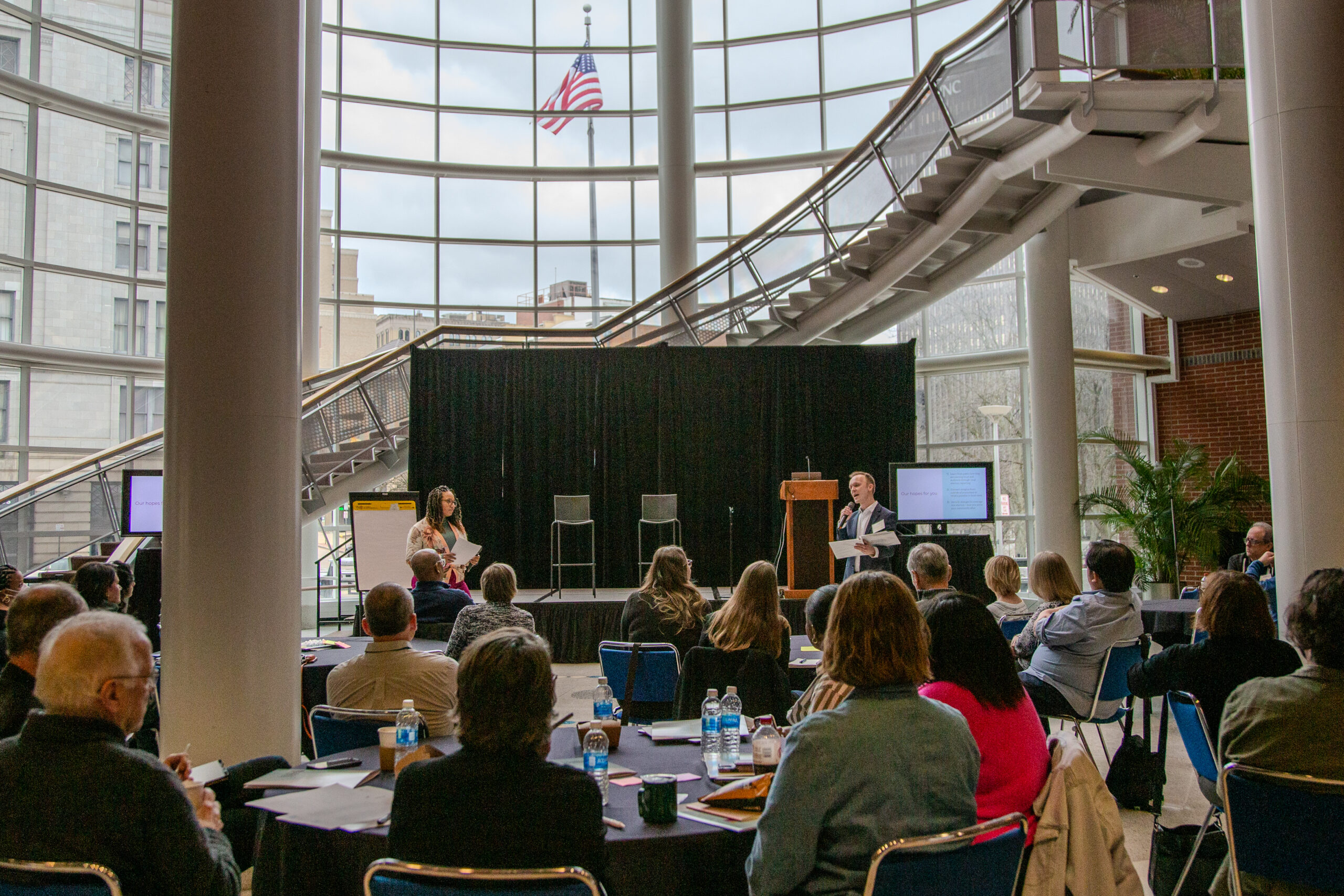In April, the American Press Institute convened nearly 70 news leaders and experts from non-news spaces in Akron, Ohio, for our Local News Summit on Elections, Trust and Democracy. Leaders from such organizations as Louisville Public Media, Baltimore Beat, Dallas Morning News and Factchequeado spoke with one another about their communities’ local elections as well as the national election that threatened further disruption and division.
One thing was clear: Everyone knew the job was to use information and access to support their communities and democracy.
The two-day summit also led to a 5-step process for how news organizations can do this work now — and year-round. How we cover elections and engage local communities can be one piece woven into how we serve them every year. It shouldn’t be disjointed. Our election coverage can flow from, pull from and build upon yearlong engagement that helps people make decisions and their communities thrive.
Read more: Americans have concerns about election coverage. Here are 3 ways to respond
While news organizations focus on the Nov. 5 vote, how might this coverage prepare for the work to come after? Here’s the process that emerged as we held space for, and listened deeply to, some of the most thoughtful local and community news leaders in the country.
Define the principles that guide your work
Most beats in a newsroom have values. They may be unspoken, but there are things that we emphasize or that direct our actions, that pull us toward certain stories or projects, because of what we value.
Identifying these values is the first step in leveraging your 2024 election coverage to serve your community after the results are final. To do this well, you can’t stop at the values. You have to translate them into guiding principles, which are action-oriented statements that direct our yesses and our nos. Because sometimes, a word alone — like, honesty or accountability or connection — doesn’t give enough direction or can be understood differently depending on someone’s lived experiences.
You can onboard someone to your guiding principles with greater, sustained success than you can onboard someone to your values. This is especially true of those working across beats to support your election coverage as a temporary assignment.
For example:
- Connection → Our reporting prioritizes intentional connection with our community.
- Responsibility → We take public, professional and personal responsibility for the impact of our stories.
Now, write your own by first: listing two to three values of your election coverage and then by translating your values into guiding principles.
These guiding principles will shape your election coverage, communicate your news value and signal your organizational culture.

We visually captured core ideas from this API Local News Summit with the help of local Akron illustrator Luke Myers.
Stop doing all the things
Guiding principles, like a mission statement, are a series of statements that offer a lens through which you can make decisions, including the most important one: what to stop doing.
To report on elections, and to support our communities after them, we have to move away from the idea that everything is important. Not everything on our plates today is achieving the business goals we’ve set or the guiding principles we’ve now defined — not everything we’re doing is impactful.
The API workshop, “Create your ‘stop doing’ list” led by Director of Local News Transformation Emily Ristow, will help you identify what you can stop doing so you can start doing the most impactful work. The supplemental worksheet will ask you to do the following:
- Write down underachieving elections coverage
- Write it ALL down
- Interrogate and prioritize your list
- Make a plan
Make a copy of the worksheet or gather your team and use the API special series, “Prioritize Your Workload,” to get started.
Delegate what you can’t stop doing
 We are so focused on the communities we serve — and rightfully so, since many have been underserved for years — that we can neglect the communities within our news organizations.
We are so focused on the communities we serve — and rightfully so, since many have been underserved for years — that we can neglect the communities within our news organizations.
To move into a “beyond the election” frame of mind, your plate has to be less full. You can do this by stopping the things that aren’t serving your goals or your principles. You can also do this by delegating, which bubbled up during the Akron summit several times.
- How might we share the work?
- Who might grow in their contributions, their self-awareness and their career if we delegate?
- What might we remove from their plate to set them up for success?
The great thing about some of these questions is that many of us are in shops or on teams that already know the answers. People within our newsrooms will raise their hands if they know we’re looking. Delegating important work, maintenance work and work you love transfers your authority, communicates trust and assigns value to the person you’re delegating to. This delegation roadmap will help.
Listen to your community and amplify their voices
With principles to guide you and time to focus on impact, you can start to hear each contribution to the choir instead of just the choir as a whole.
Many news organizations know the importance of listening and engaging the community, and you’re taking it one step further by pivoting your attention from top-of-funnel audience to building community connections and relationships beyond a single story. You’re hosting listening sessions, doing community canvassing and hosting live events. You believe in storytelling and information-sharing even when the noise on the internet can make both so difficult. You are actively creating a feedback loop that goes beyond traffic and even subscriptions.
Community-facing and -serving journalists — those who understand that their present-day reporting and coverage can inform how and what they report in the future — readily listen to the unprompted feedback loop that their community provides. Then, they activate that feedback to amplify all voices in the choir — not just the ones that sound like theirs.
- Start by reflecting back to the best feedback the community has given you. (Remember: Feedback is a two-sided coin with critical feedback on one side and praise on the other.)
- Note the behavior or coverage change that happened because of this feedback, and why you made that change.
- Record what feedback you want to receive from your community after the election.
Build products and services to help
This aspirational feedback can be a sort of North Star during this election season, and should be kept top of mind as you consider how next year is also an election year by way of how you follow up on key ballot issues and progress as well as how you continue listening to your community when the stakes may appear lower.
A final exercise to work through is how you move from ballot box coverage to civic tools and services that help your community live their best, most engaged lives.
Questions to ask:
- What groundwork are you establishing now… for later?
- What data will you collect?
- What smoke signals will you send?
- What sentiment will you watch for?
- What value might you identify?
A useful framework for this is the Strategyzer Value Proposition Canvas, which you can complete in a quick, solo, 10-minute flare, or do a deeper exploration of for an hour with a curated team of three to five others. It will help you think about a clearly defined community before you think about a way to support them with a product, service or content idea.
First, define your community. Be as specific as possible. In the summit, communities included “civically curious Angelenos” and the “likely engagers, disenchanted and directly impacted.”
Then, explore these topics, in this order:
- Pains: List a few pains from your community.
- Gains: List a few outcomes or benefits for your community.
- Jobs to be done: List a few jobs that your community is trying to get done in work or life.

Finally, consider the value proposition of the product, service or content you could create to meet the community at their pain point. Answer:
- How might your product relieve a pain point for your community?
- How might your product/service/content create an explicit gain for your community?
- How might your product help your community get their job(s) done?

If your news organization needs help in how they’re thinking about, and moving toward, community service and engagement, please contact us. And if you’re interested in partnering or financially supporting our efforts to help local news think creatively and critically about how they support their communities beyond the election, please let us know that, too.
Gratitude goes to the Kiplinger Program in Public Affairs Journalism, our Resources and Insights Sponsor for our API Local News Summit on Elections, Trust and Democracy. Their support expands the public-facing resources we can make from this gathering. To learn more about supporting future API Local News Summits of news leaders, please contact us.
You might also be interested in:
As the American Press Institute marks 80 years, we’ll honor our legacy by continuing to respond to the evolving needs of news leaders. Our upcoming API Local News Summits will explore three critical places where democracy and sustainability intersect.
Reaching younger audiences has long been a challenge for media organizations. As platforms evolve, trust in news shifts and news avoidance grows, it can feel especially difficult to connect with and serve multigenerational audiences in an authentic and sustainable way. How can news leaders do their part to represent and include community perspectives from members of different age groups?
For us, we knew one of our biggest hurdles to success would be challenging the assumptions, both spoken and unspoken, we held for others. Here’s what we’ve learned over the past three years of gathering multigenerational problem-solvers.



